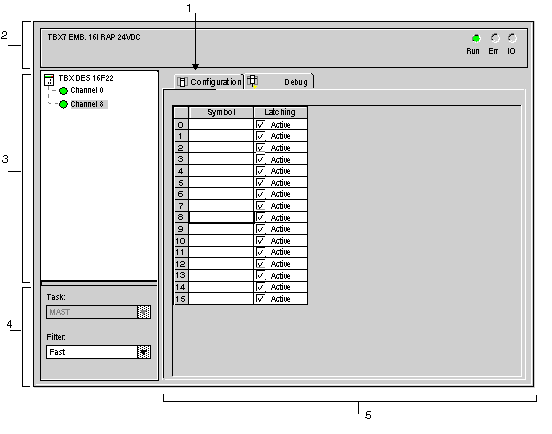|
Configuration Screen of a Fipio Device
|
|
|
(Original Document)
|

|
Number
|
Element
|
Function
|
|---|---|---|
|
1
|
Tabs
|
The tab in the foreground indicates the mode in progress (Configuration in this example). Every mode can be selected using the respective tab. The available modes are:
|
|
2
|
Module area
|
Gives a reminder of the device’s shortened name.
|
|
3
|
Channel area
|
Is used:
|
|
4
|
General parameters area
|
This area is used to define:
|
|
5
|
Configuration area
|
This area is used to set up the channels of the devices. For certain types of devices, this area is not accessible.
|